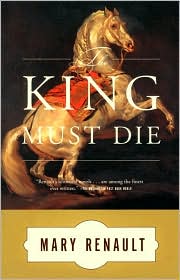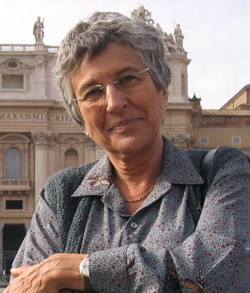“The law is: The King Must Die.”
Mary Ren ault’s great Greek novel of early Greek history/mythology begins when Theseus, the mythical founder of Athens is a young man in Troizen, a well-bred youth who has never known his father’s identity. When, with the help of the gods, he succeeds in lifting a stone to reclaim his father’s sword, Theseus discovers that he is the son of Aigeus, King of Athens. On his way to Athens to meet him, Theseus arrives in Eleusis, where after wrestling the king in a fight to the death, he finds himself, unexpectedly, the King of Eleusis. Later, in Athens, when fourteen young men and women are chosen by lot to become bull-dancers in Crete, fulfilling a tribute demanded by the King of Crete, Theseus listens to his god and joins the group, never knowing if he will survive to return to his father.
ault’s great Greek novel of early Greek history/mythology begins when Theseus, the mythical founder of Athens is a young man in Troizen, a well-bred youth who has never known his father’s identity. When, with the help of the gods, he succeeds in lifting a stone to reclaim his father’s sword, Theseus discovers that he is the son of Aigeus, King of Athens. On his way to Athens to meet him, Theseus arrives in Eleusis, where after wrestling the king in a fight to the death, he finds himself, unexpectedly, the King of Eleusis. Later, in Athens, when fourteen young men and women are chosen by lot to become bull-dancers in Crete, fulfilling a tribute demanded by the King of Crete, Theseus listens to his god and joins the group, never knowing if he will survive to return to his father.
Renault tells the story of Theseus as if Theseus were a real person, not a mythical character, using history, archaeology, and a deep understanding of the cultures of the period to place Theseus in a realistic context. Her descriptions of the lifting of the stone, the wrestling match in Eleusis, Theseus’s arrival at the palace in Athens, and especially his experiences in becoming a bull dancer bring the period vibrantly to life in ways consistent with the historical record.

Theseus’s devotion to the god Poseidon, to whom he prays throughout his journey, reflects his appreciation of his own smallness in relation to the gods, and his honoring of the gods unique to the kingdoms he visits show how the Greek religion gradually incorporated increasing numbers of gods and goddesses to explain the increasingly complex mysteries of life faced by Greek citizens.
Renault never fails to treat Theseus, his religion and culture, and the traditions of the countries in which he travels with the dignity they would have inspired in their own period. She never patronizes either her characters or her readers, writing with elegance and a fine appreciation for the details of daily life, the art of the period, and the pantheon of gods thought to control men’s destinies.
 Whether Theseus was a real man whose strength and reputation grew to mythical proportions, as Renault illustrates, or whether he was, in fact, a mythical character whom she places in a realistic context in ancient Greece is less important than the fact that she creates a plausible life for this monumental character. Few, if any, other authors are so successful in recreating an entire era, its people, its beliefs, and its culture.
Whether Theseus was a real man whose strength and reputation grew to mythical proportions, as Renault illustrates, or whether he was, in fact, a mythical character whom she places in a realistic context in ancient Greece is less important than the fact that she creates a plausible life for this monumental character. Few, if any, other authors are so successful in recreating an entire era, its people, its beliefs, and its culture.
Notes: The author’s photo appears on http://www.liontv.com. This company has produced a sixty-minute program entitled “Mary Renault: Love and War in Ancient Greece.”
The image of bull-dancing or bull-leaping appears in a fresco at Knossos. (Shown on Wikipedia)
